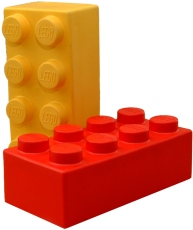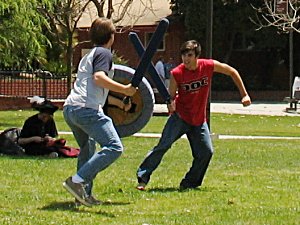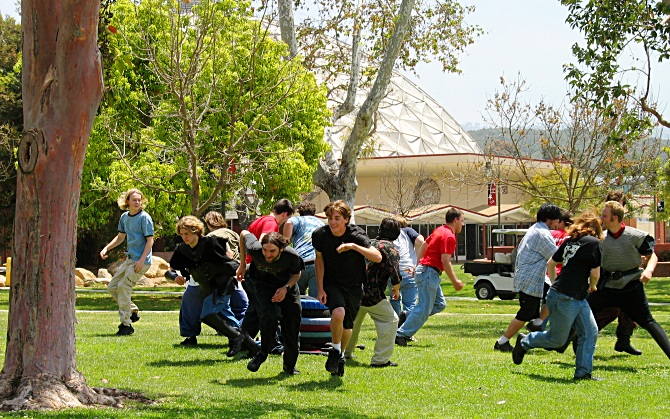 In my logic class today the professor was illustrating the point that the final conclusion in a mapped argument may not be the main point of the argument. As an illustrative example he related the following scenario.
In my logic class today the professor was illustrating the point that the final conclusion in a mapped argument may not be the main point of the argument. As an illustrative example he related the following scenario.
Imagine that I am building a wall out of LEGO® bricks. I want to make the wall as tall as possible, but it’s still on its side on the ground. I want to add more LEGO® bricks to it, so I ask my friend if she’s done with her LEGO® bricks yet. She says she is done with her LEGO® bricks and that I may use them. Where do I put the LEGO® bricks in order to make the wall taller? You can put the LEGO® bricks at the top or the bottom of the wall. It doesn’t matter, it still makes the wall taller.
I was impressed that he followed the instruction on the back page of the LEGO Company Profile. The 2004 and 2005 versions, and possibly other oversions, include the following recommendations:
Using the LEGO brand name
Help us to protect our brand name:
- The LEGO brand name should always be written in capital letters.
- LEGO must never be used as a generic term or in the plural or as a possessive pronoun, e.g. “LEGO’sâ€.
- When the LEGO brand name is used as part of a noun, it must never appear on its own. It should always be accompanied by a noun. For example, LEGO set, LEGO products, LEGO Group, LEGO play materials, LEGO bricks, LEGO universe, etc.
- The first time the LEGO trademark appears in a headline and in the following text it should be accompanied by the registration symbol ®.
Thank you for helping us!
As it turns out, he had no idea that there were any such recommendations and seemed quite amused that he was “being a good guy and didn’t even know it.” Speaking like that seems so unnatural to me that I was relatively certain that he was doing it on purpose as a result of something he had been taught. LEGO® would have been pleased to know that such brand name usage advocacy is being demonstated in an academic setting.


 While walking from my logic class to the parking lot I heard a mighty roar and the thunk of warriors engaged in padded weapon combat. It was like a live action deathmatch set in a medieval universe.
While walking from my logic class to the parking lot I heard a mighty roar and the thunk of warriors engaged in padded weapon combat. It was like a live action deathmatch set in a medieval universe.
 In my logic class today the professor was illustrating the point that the final conclusion in a mapped argument may not be the main point of the argument. As an illustrative example he related the following scenario.
In my logic class today the professor was illustrating the point that the final conclusion in a mapped argument may not be the main point of the argument. As an illustrative example he related the following scenario.